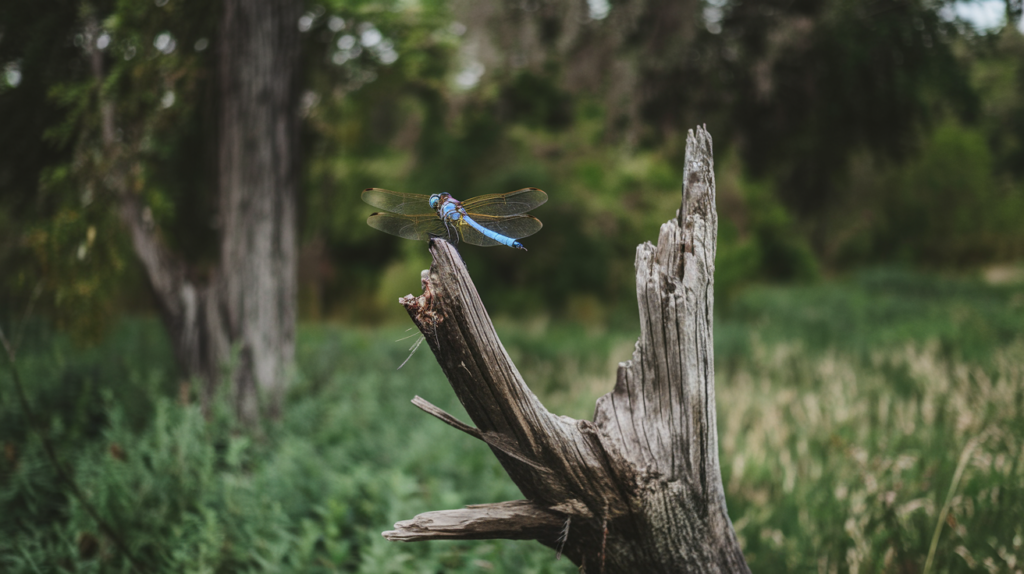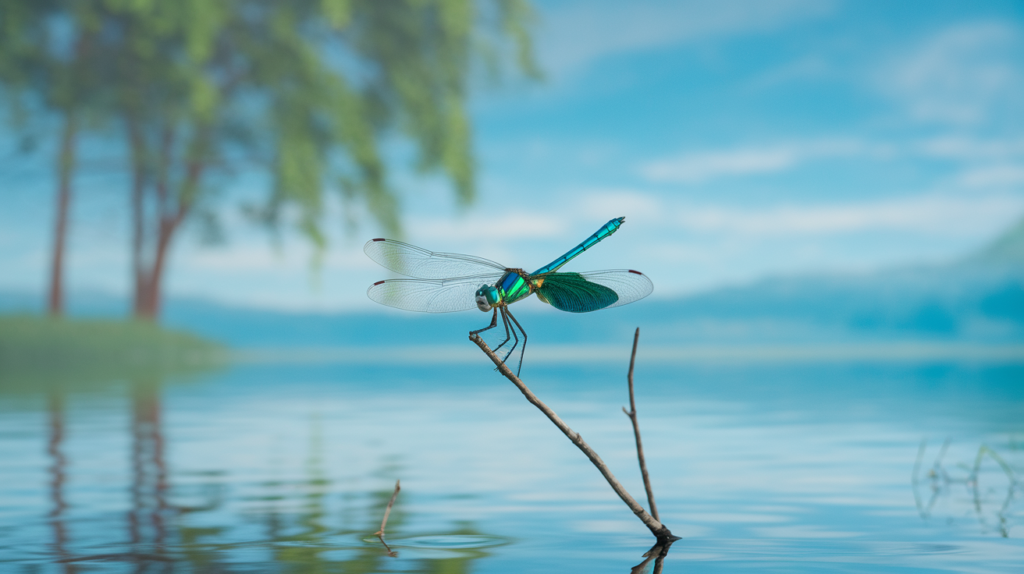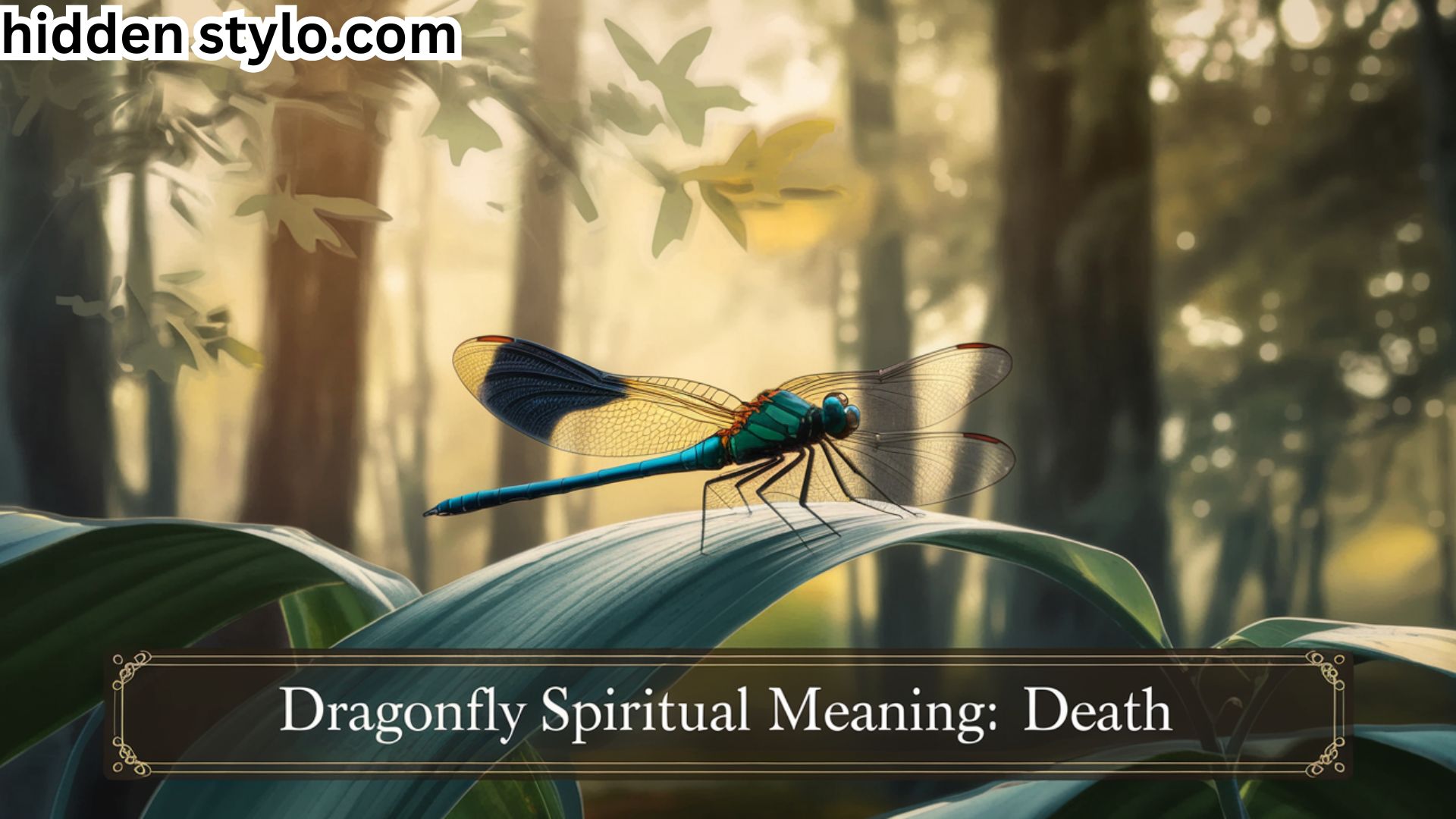The dragonfly spiritual meaning death is a mystical and fascinating creature, admired for its delicate beauty and ability to move gracefully through the air. While dragonflies are often associated with themes of transformation, change, and adaptability,
their symbolism also delves into the realm of death and the afterlife. In many spiritual traditions, dragonflies are seen as messengers of the soul, reminding us of life’s impermanence and the cycles of death and rebirth.
Let’s dive deeper into the spiritual meaning of dragonflies, especially in relation to death.
The Dragonfly’s Symbolism Across Cultures
Ancient Beliefs and Spiritual Significance
Dragonflies have appeared in various cultures for centuries, often linked to themes of transformation, healing, and even death. Their lifespan is short, living only for a few months in some cases, but this brevity adds to their spiritual significance as symbols of the fleeting nature of life.
- Native American Symbolism: For many Native American tribes, the dragonfly represents swiftness and change. They often associate dragonflies with the spirit world, viewing them as intermediaries that can convey messages from the deceased or guide souls to the afterlife.
- Japanese Symbolism: In Japan, the dragonfly is known as “takanami” and is considered a symbol of courage, strength, and happiness. The creature’s resilience and vibrant colors make it a reminder to appreciate life’s fleeting moments, a concept that ties into the understanding of death as part of life’s natural flow.
- Chinese Mythology: In Chinese culture, the dragonfly is a symbol of prosperity and good fortune. However, its brief life span also symbolizes the transient nature of wealth and success, reinforcing the idea that life’s material pursuits fade, but spiritual growth endures.
The Spiritual Messenger of Death
One of the more profound meanings associated with dragonflies in spiritual practices is their role as messengers from the afterlife. When you see a dragonfly at a time of mourning or during moments when you feel connected to someone who has passed, it’s believed that the creature may be carrying a message from the deceased.
The dragonfly’s appearance in these instances is often interpreted as a sign that the spirit of your loved one is at peace, offering comfort and reassurance.
The Dragonfly’s Life Cycle: A Symbol of Death and Rebirth

The Metamorphosis: A Reflection of the Soul’s Journey
The life cycle of the dragonfly spiritual meaning death itself serves as a powerful metaphor for spiritual transformation. The insect starts its life as a water nymph, hidden below the surface of the water for up to two years, before emerging into the light as an adult dragonfly.
This dramatic metamorphosis from the darkness of the water to the air is a vivid representation of spiritual awakening and rebirth.
In many spiritual interpretations, this process of metamorphosis reflects the human experience of death. Just as the dragonfly must shed its old form to enter a new one,
so too does the soul undergo transformation after death, leaving behind its earthly existence to ascend to the next phase of life or spiritual awakening.
Embracing the Transience of Life
Dragonflies live relatively short lives, often only a few weeks to a few months. This ephemeral existence adds to their spiritual significance as symbols of life’s impermanence. They remind us that, like them, we too are temporary in the grand scheme of things.
Their graceful flight through the air, coupled with their brief lifespan, encourages us to live fully, seize the moment, and accept death as a natural part of the cycle of life.
Death and Transformation: Letting Go of Fear
For many, the appearance of a dragonfly during times of loss or grief is a reminder that death is not something to fear. Instead, it should be viewed as a transformation, a transition into a new phase of existence.
Just as the dragonfly spiritual meaning death sheds its old skin and transforms into something more beautiful, the soul too is believed to undergo a transformation after death one that leads to peace, renewal, and spiritual growth.
What Does It Mean When a Dragonfly Appears During Grief?
Seeing a dragonfly spiritual meaning death after the death of a loved one can be a deeply moving experience. For those who are grieving, it can offer a sense of comfort, closure, and connection to the departed spirit. Here’s how you can interpret and understand the appearance of a dragonfly in moments of sadness or mourning.
1. A Reminder of Life’s Impermanence
The dragonfly’s presence often serves as a reminder that life is fleeting. It asks us to reflect on how we spend our time and to appreciate every precious moment.
In times of loss, this can help shift your perspective, turning grief into a powerful realization of how much we should cherish the time we have with those we love.
2. Embracing the Spirit of Change
A dragonfly spiritual meaning death appearing in times of personal loss or hardship may be a spiritual sign that you’re entering a period of change. This could be a shift in your emotional state,
A spiritual awakening, or a new chapter in your life. Just as the dragonfly goes through a powerful transformation, you may be undergoing one tooa n evolution of the soul that follows the loss of a loved one.
3. Connection to the Spirit World
In many cultures, the dragonfly is thought to bridge the gap between the physical world and the spirit realm. Its presence may symbolize a loved one who has passed, offering a silent yet profound message from the other side.
If you see a dragonfly near a loved one’s grave or during moments of reflection, it could be interpreted as a sign that they are still present in spirit, guiding and watching over you.
4. A Call for Healing and Renewal
Death is often followed by grief, but the dragonfly encourages you to embrace the healing process. It’s a symbol of regeneration, urging you to heal from the loss and move forward with renewed strength and purpose. Just as the dragonfly emerges from the water, you too can rise from your sorrow and begin anew.
How to Honor the Dragonfly’s Message

1. Meditate on Its Symbolism
Take time to reflect on what the dragonfly represents in your life. Meditate on its appearance and allow yourself to connect with its spiritual meaning. This can help bring peace to your heart and clarity to your grief.
2. Create a Memorial
If the dragonfly has appeared during a moment of mourning, consider creating a small memorial or ritual in honor of the loved one you’ve lost. This could be something as simple as lighting a candle, writing a letter, or spending time in nature. The dragonfly’s symbolism encourages you to honor both the memory of the deceased and the transformative power of death.
3. Let Go of Fear
Remember, the dragonfly’s fleeting existence speaks to the beauty of living fully without fear. Allow its presence to inspire you to live with more intention and courage, embracing every stage of your journey—even the inevitable moments of loss.
Conclusion: The Dragonfly as a Spiritual Guide
The dragonfly’s spiritual meaning in relation to death is both profound and comforting. Its short yet graceful life cycle reminds us that death is not an end but a transition a natural and transformative part of the journey.
Whether it’s a sign from a loved one or a symbol of personal transformation, the dragonfly encourages us to embrace change, live with intention, and find peace in the knowledge that death is just another phase in the ongoing cycle of existence.
When a dragonfly crosses your path, take it as a reminder to live fully, to appreciate the fleeting moments, and to honor both life and death as part of a beautiful, endless transformation.

